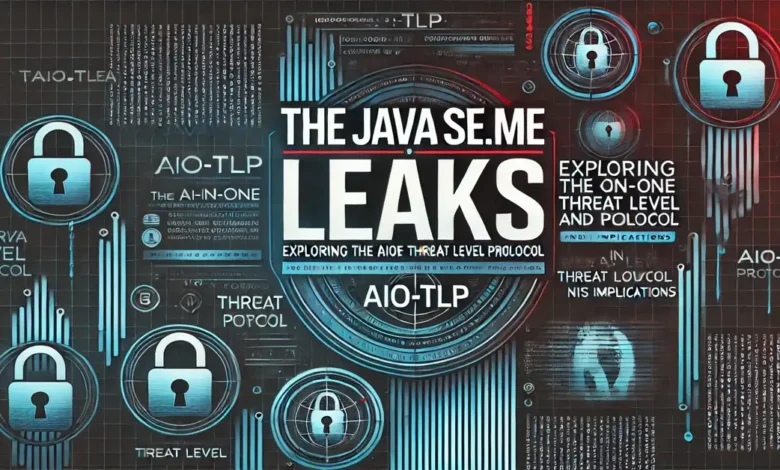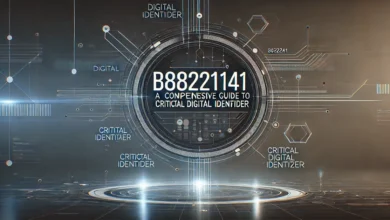TheJavaSea.me Leaks: Exploring the AIO-TLP (All-In-One Threat Level Protocol) and Its Implications

In today’s digital era, where information flows freely and cyber threats have become an ever-present reality, data leaks are one of the most critical concerns for individuals, businesses, and even governments. In this landscape of cybersecurity risks, certain platforms have emerged that disseminate leaked data, sparking debates about privacy, security, and ethics. One such platform that has gained significant attention is TheJavaSea.me, known for its controversial AIO-TLP (All-In-One Threat Level Protocol) leaks. This article delves deep into the inner workings of TheJavaSea.me leaks aio-tlp, focusing on AIO-TLP, its implications, and the broader impact of such leaks on various sectors.
TheJavaSea.me: An Overview
TheJavaSea.me is a notorious website that hosts and distributes leaked data, typically related to cybersecurity breaches, sensitive information, and proprietary content from various sources. The site has become a hub for those who seek access to information that is often considered illegal or unethical to distribute. Operating in a clandestine manner, TheJavaSea.me caters to a niche audience that includes cybersecurity professionals, hackers, data analysts, and individuals interested in obtaining and disseminating leaked information.
What sets TheJavaSea.me apart from other similar platforms is the structured way it handles data leaks, particularly through its use of the AIO-TLP. This protocol enables users to better understand the severity of a leak and the sensitivity of the information exposed, making it easier to assess the potential damage such leaks can cause.
The Purpose of Data Leaks on TheJavaSea.me
Before diving into the specifics of the AIO-TLP, it is important to understand why platforms like TheJavaSea.me exist and what purpose they serve in the broader cybersecurity landscape. Data leaks have multiple motivations, some of which include:
- Exposing vulnerabilities: Hackers often release data leaks to expose weaknesses in the security systems of organizations, corporations, or governments. This serves as a warning signal to improve security protocols.
- Political activism or hacktivism: Some leaks are done with the intention of making political statements or revealing unethical practices by governments or large corporations.
- Financial gain: Leaked data, especially if it contains sensitive personal information or corporate secrets, can be sold on the dark web for profit.
- Revenge or retaliation: Insider leaks often stem from disgruntled employees or individuals who aim to retaliate against a former employer or organization.
AIO-TLP: What Is It?
AIO-TLP, or All-In-One Threat Level Protocol, is a concept that plays a crucial role in cybersecurity. It is a structured framework designed to categorize the severity of data leaks and the sensitivity of the information that has been exposed. By using this protocol, cybersecurity professionals can assess how damaging a particular leak might be and what steps need to be taken to mitigate the potential fallout.
The AIO-TLP typically follows a color-coded system, with each color representing a different level of threat. This system is derived from traditional Traffic Light Protocol (TLP) models used in cybersecurity to define the sensitivity of information sharing. AIO-TLP, however, takes it a step further by integrating all relevant factors to provide a comprehensive view of the risk. Here’s a breakdown of the color codes commonly used in AIO-TLP:
1. Green: Low Threat Level
Leaks categorized under the green level are considered low risk. The information leaked at this level may not be highly sensitive or proprietary, and the impact on the affected party is minimal. Examples include public records or outdated data that no longer poses any risk to organizations or individuals.
2. Amber: Moderate Threat Level
Amber indicates a moderate level of risk. The leaked data may contain sensitive information, but it is not critical or time-sensitive. For example, business strategies or non-confidential internal communications might fall under this category. While this type of data can cause some reputational or operational damage, it typically doesn’t result in severe consequences.
3. Red: High Threat Level
Red represents a high level of threat, where the leaked data contains highly sensitive or proprietary information. This could include personal identification data (e.g., Social Security numbers, medical records), corporate trade secrets, or classified government information. Leaks at this level can have severe consequences for the affected parties, including financial loss, reputational damage, or even legal ramifications.
4. Black: Critical Threat Level
The black category signifies critical risk, where the leak involves highly classified or top-secret information that could have catastrophic consequences. This level is often associated with national security breaches, the exposure of state secrets, or extremely sensitive corporate data. The fallout from a black-level leak can be devastating, leading to long-term damage and, in some cases, threats to life or national stability.
How AIO-TLP Helps Manage Data Leaks
The AIO-TLP framework is integral in helping organizations and cybersecurity professionals respond to data breaches effectively. Once a leak is detected on platforms like TheJavaSea.me AIO-TLP, the first step is to assess the severity using the AIO-TLP color-coded system. This categorization allows the affected parties to prioritize their response efforts based on the threat level of the leak.
For example:
- If a leak is categorized as Green, the organization might focus on monitoring for any potential repercussions but may not take immediate, drastic actions.
- A Red or Black threat level, however, would require a full-scale response, including notifying affected individuals, hiring forensic experts to trace the origin of the breach, and implementing strict security protocols to prevent further leaks.
This structured approach helps businesses and governments make informed decisions about how to handle sensitive situations and minimize the damage caused by leaks.
Implications of TheJavaSea.me Leaks Aio-tlp
The leaks on TheJavaSea.me, categorized under the AIO-TLP framework, have far-reaching consequences across various sectors. Some of the most prominent impacts include:
1. Impact on Businesses
Corporations are often the hardest hit by data leaks, especially when proprietary information, intellectual property, or customer data is exposed. Leaks categorized under Amber or Red on TheJavaSea.me can lead to significant financial losses, not only from lost business opportunities but also due to the potential costs of repairing security breaches, handling lawsuits, and dealing with reputational damage.
For example, a Red-level leak of sensitive product designs could result in the loss of competitive advantage, allowing rivals to reverse-engineer the designs and enter the market with similar products. This, in turn, erodes the market share of the affected company.
2. Impact on Government Entities
Leaks involving government entities are often categorized under the Black threat level, particularly when they involve classified or top-secret information. In some cases, such leaks can pose a serious risk to national security, especially if they expose military strategies, diplomatic communications, or critical infrastructure vulnerabilities.
Governments often deploy cybersecurity experts to trace the source of such leaks and take measures to contain the damage. In some cases, these efforts include diplomatic responses, public statements, and the implementation of enhanced security protocols to prevent future breaches.
3. Impact on Individuals
Individuals are also affected by leaks on TheJavaSea.me, particularly when personal data is exposed. Red-level leaks involving personally identifiable information (PII), such as Social Security numbers, addresses, or medical records, can lead to identity theft, fraud, and significant stress for those affected.
Furthermore, as these leaks are often distributed on platforms frequented by malicious actors, individuals whose data is exposed may become targets for cybercriminals. Organizations are required to notify affected individuals when such breaches occur and may be legally obligated to offer services like credit monitoring to protect against fraud.
4. Cybersecurity Industry’s Response
The presence of platforms like TheJavaSea.me has forced the cybersecurity industry to constantly evolve. Cybersecurity professionals are now tasked with preventing leaks, monitoring dark web activity, and developing new tools to combat the spread of leaked data. They use the TheJavaSea.me leaks AIO-TLP framework as a guide to prioritize threats and allocate resources based on the severity of each leak.
In response to high-level threats, businesses and governments often employ ethical hackers or penetration testers to identify vulnerabilities in their systems before a breach occurs. Additionally, encryption technologies and data loss prevention (DLP) systems are increasingly being implemented to secure sensitive data.
How TheJavaSea.me Differs from Other Leak Platforms
Although there are multiple platforms on the dark web that deal in leaked information, TheJavaSea.me stands out for its structured use of TheJavaSea.me leaks AIO-TLP and its focus on disseminating high-level data leaks. Many leak platforms tend to focus on smaller-scale data breaches or the exchange of personal information for financial gain. TheJavaSea.me, however, seems to cater to a more technologically-savvy audience, including cybersecurity experts and hackers who use the platform to monitor large-scale breaches and assess their potential impacts.
In addition, TheJavaSea.me provides more detailed insights into the nature of the leaked data, allowing users to assess the value or risks associated with a particular leak. This differentiates it from other platforms, which may simply act as a repository for raw data without any significant analysis or context.
Ethical and Legal Considerations Surrounding TheJavaSea.me Leaks Aio-tlp
One of the most contentious issues surrounding TheJavaSea.me leaks Aio-tlp is the ethical and legal questions they raise. While some users argue that leaking sensitive information serves a public interest—for example, by exposing corporate malfeasance or government misconduct—others see it as a direct violation of privacy laws and intellectual property rights.
Many governments and organizations have condemned platforms like TheJavaSea.me, stating that the publication of sensitive data without consent is illegal and can cause irreparable harm. In response, law enforcement agencies have been working to shut down such platforms and prosecute those involved in the leaks. However, due to the anonymity provided by the dark web, tracking the operators of TheJavaSea.me and similar platforms is a challenging task.
Conclusion: Navigating the World of TheJavaSea.me Leaks AIO-TLP
In the ever-evolving landscape of cybersecurity, data leaks are a constant threat. Platforms like TheJavaSea.me have emerged as key players in the dissemination of leaked data, bringing to light sensitive information that can have far-reaching consequences for individuals, businesses, and governments. Through the use of the TheJavaSea.me leaks AIO-TLP framework, TheJavaSea.me categorizes leaks based on their threat level, providing a structured approach to understanding the severity of each breach.
While the platform’s operations raise significant ethical and legal concerns, there is no denying its role in shaping the way we think about data security, privacy, and the power dynamics of information sharing in the digital age. As technology continues to advance, both the risks and the protections surrounding sensitive data will evolve, making it more important than ever to stay informed about the latest developments in cybersecurity and data leak prevention.
In this context, TheJavaSea.me leaks Aio-tlp serve as a reminder that in the digital age, information—whether ethical or not—is one of the most powerful tools available. And understanding the frameworks like TheJavaSea.me leaks AIO-TLP is key to navigating this complex and ever-changing landscape.





